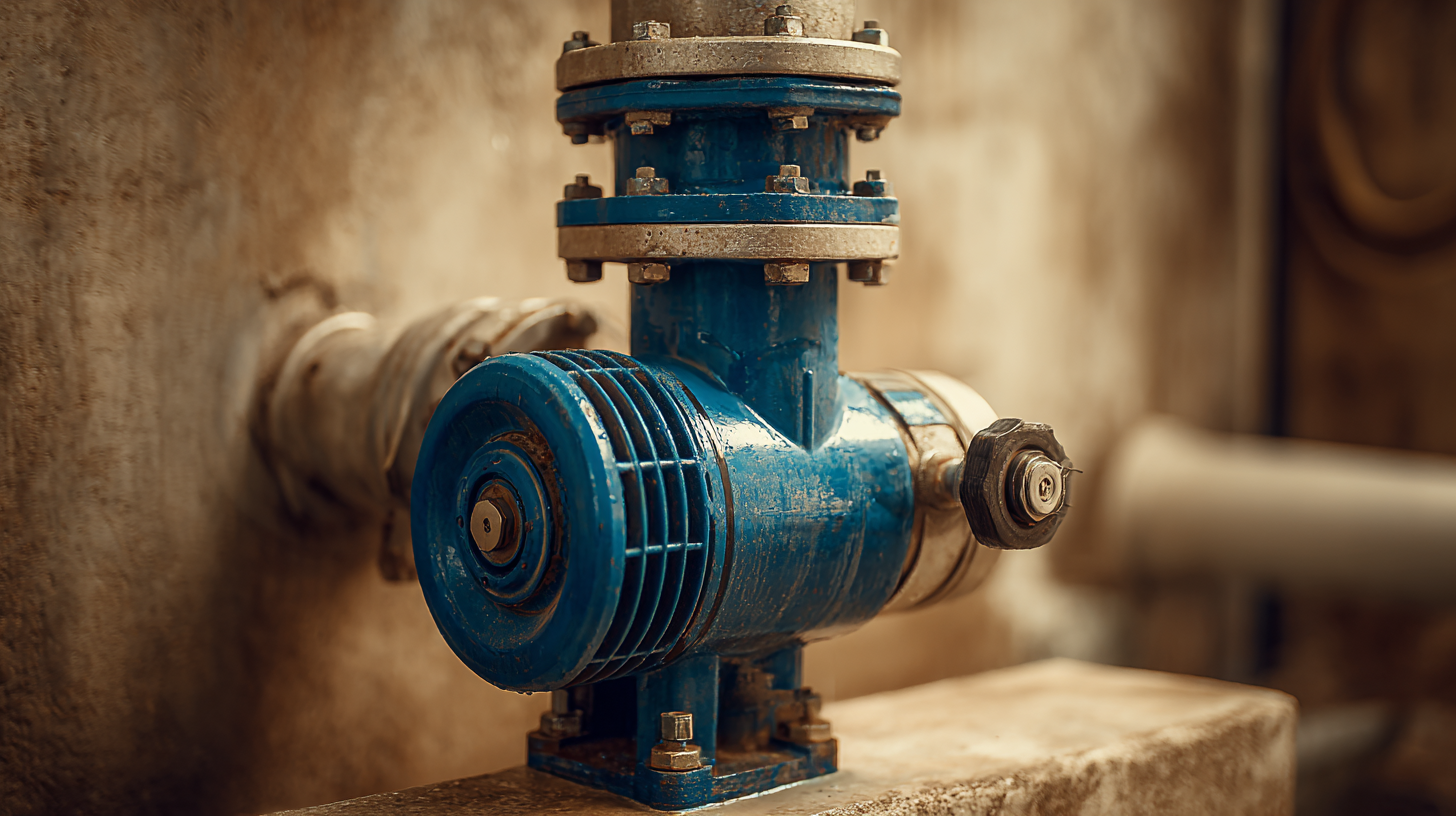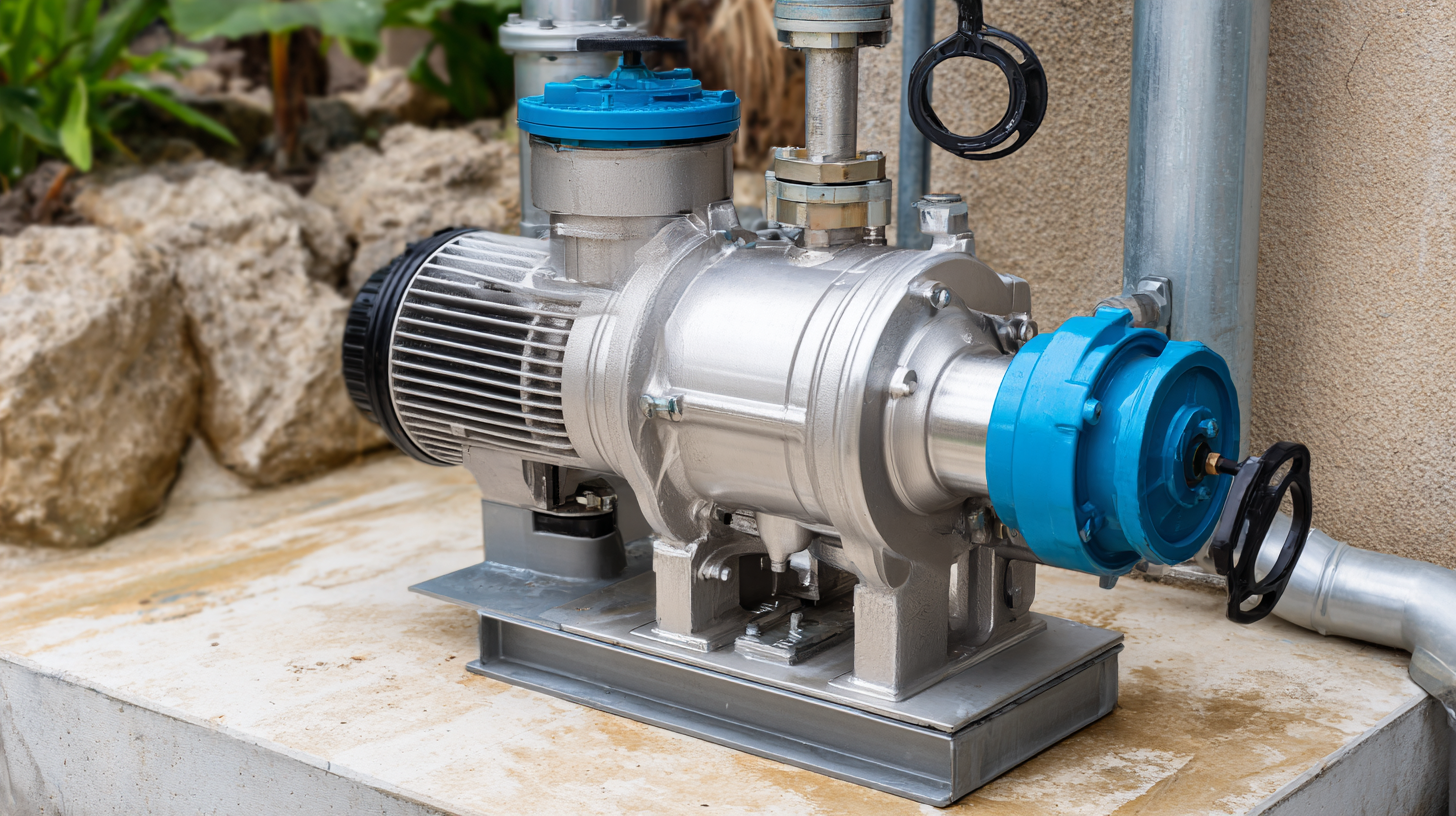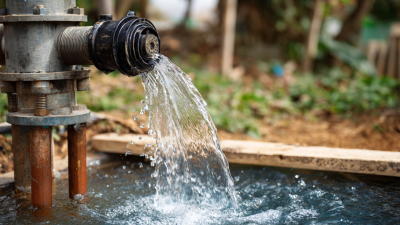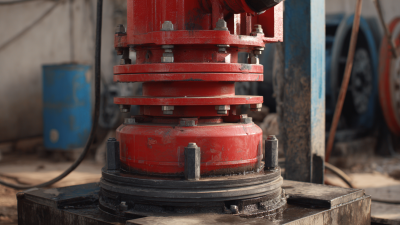Understanding the Benefits of a Well Pressure Pump for Your Home Water Supply
A well pressure pump is an essential component for homeowners relying on well water for their daily needs, providing a consistent and reliable water supply. According to the Water Systems Council, approximately 13 million households in the United States utilize private wells, making the efficiency and functionality of well pressure pumps critical for maintaining water quality and pressure. These pumps are designed to automatically adjust to fluctuations in water demand, ensuring adequate supply for various household activities, from bathing to irrigation. Additionally, recent studies suggest that modern well pressure pumps can significantly reduce energy consumption—by up to 30%—compared to older models, translating to lower utility bills and a reduced carbon footprint. By understanding the numerous benefits that a well pressure pump brings to home water systems, homeowners can make informed decisions to enhance their water supply efficiency and overall sustainability.

How to Choose the Right Well Pressure Pump for Your Home Needs
When choosing the right well pressure pump for your home needs, it’s essential to consider factors such as the pump's capacity, efficiency, and the depth of your well. A well pressure pump that matches your household water demand will ensure a consistent supply without overworking the system. Start by assessing your household's peak water usage — consider appliances, number of occupants, and outdoor needs.
Tips:
1. **Calculate Water Demand**: Determine the gallons per minute (GPM) your household needs during peak times. This will guide you in selecting a pump that can meet those demands efficiently.
2. **Consider Pump Depth**: Measure the depth of your well and choose a pump that can effectively draw water from that depth. Submersible pumps are ideal for deeper wells, while jet pumps work better for shallower sources.
3. **Energy Efficiency**: Look for pumps that have a good energy-efficiency rating to save on electricity bills in the long run. Investing in a quality pump that minimizes energy use can quickly pay off.
By taking these factors into account, you can select the right well pressure pump that offers reliability and efficiency for your home water supply.

How to Properly Install Your Well Pressure Pump for Optimal Performance
 Installing a well pressure pump properly is crucial to ensure optimal performance and longevity. The first step involves selecting the right location for your pump. It should be installed on a solid, level surface to avoid unnecessary vibrations that can lead to wear and damage. Additionally, ensure that the pump is positioned close to the water source, reducing the amount of piping needed and minimizing potential leaks.
Installing a well pressure pump properly is crucial to ensure optimal performance and longevity. The first step involves selecting the right location for your pump. It should be installed on a solid, level surface to avoid unnecessary vibrations that can lead to wear and damage. Additionally, ensure that the pump is positioned close to the water source, reducing the amount of piping needed and minimizing potential leaks.
Next, it’s essential to connect the pump to your household plumbing system correctly. This includes using the appropriate fittings and ensuring all connections are secure to prevent water loss. After making the connections, prime the pump according to the manufacturer's instructions. Finally, check the pressure settings to ensure they align with your home’s requirements. Regular maintenance and periodic checks will help maintain optimal performance and prevent issues down the line.
How to Maintain Your Well Pressure Pump for Longevity and Efficiency
Maintaining your well pressure pump is crucial for ensuring its longevity and optimal efficiency. Regularly checking the pump and its components can prevent small issues from escalating into costly repairs. Start with inspecting the pressure switch, which regulates the pressure levels in your water system. Ensure that it is clean and free of rust or corrosion, as these can hinder performance. Additionally, monitor the pressure gauge to ensure that it is functioning correctly; fluctuations may indicate deeper issues that need to be addressed.
Another essential maintenance task involves checking the system for leaks. Any signs of leakage can severely affect the pump’s efficiency and may lead to increased energy costs. Inspect all connections, pipes, and the pump itself for any water accumulation or dampness. Don’t forget to clean the intake screen regularly to prevent clogs, which can impede water flow. Finally, consider regular professional inspections to catch potential problems early and to keep your pump operating at peak performance for years to come.
Understanding the Benefits of a Well Pressure Pump for Your Home Water Supply - How to Maintain Your Well Pressure Pump for Longevity and Efficiency
| Dimension | Details |
|---|---|
| Pump Type | Submersible and Jet pumps |
| Average Lifespan | 10-15 years |
| Power Source | Electricity |
| Typical Flow Rate | 5-100 gallons per minute |
| Common Issues | Pump failure, insufficient water supply |
| Maintenance Frequency | Annually |
| Recommended Maintenance | Regular checks, cleaning filters, inspecting electrical connections |
| Benefits | Consistent water pressure, lower energy costs, increased property value |
How to Troubleshoot Common Issues with Your Well Pressure Pump
When utilizing a well pressure pump for your home water supply, understanding the common issues that may arise can save you time and money. A report from the American Water Works Association indicates that nearly 30% of well systems experience pressure issues at least once a year. Common problems include insufficient water pressure, frequent cycling, and unusual noises. These issues can often be traced back to either the pump itself or the pressure tank.
To troubleshoot insufficient water pressure, first check the system's components, including the pressure switch, which controls pump operation. A malfunctioning switch can lead to irregular water pressure. Additionally, sediment buildup in the pressure tank may hinder its efficiency. According to the National Ground Water Association, routine maintenance, such as flushing the tank and checking for clogs, can significantly improve performance. For frequent cycling, inspect the pressure tank's bladder; a compromised bladder can cause rapid pressure fluctuations. Addressing these common problems promptly can enhance your well pressure pump's reliability and extend its lifespan.
Understanding the Benefits of a Well Pressure Pump for Your Home Water Supply
This bar chart illustrates the performance metrics of a well pressure pump in terms of water pressure, energy consumption, noise level, and maintenance frequency. Understanding these factors can help homeowners troubleshoot common issues and recognize the advantages of utilizing a well pressure pump for their water supply needs.
How to Optimize Water Pressure and Flow Rate with Your Well Pump System
A well pressure pump can significantly enhance the water pressure and flow rate in your home, ensuring a consistent and reliable water supply. This is especially relevant as the market for utility pumps in the United States is projected to grow from $1.77 billion in 2022 to $2.46 billion by 2029, with a compound annual growth rate (CAGR) of 4.8%. Such growth reflects the increasing demand for efficient water management solutions in both residential and commercial settings.
To optimize your well pump system, consider the following tips: first, evaluate the pump size and capacity relative to your home's water needs. A pump that is too small will struggle to provide adequate pressure, while one that is too large could lead to unnecessary energy costs. Second, regular maintenance of the pump and associated components, such as pressure tanks and switches, can prevent issues and prolong the lifespan of your system. Lastly, installing a pressure booster can further enhance performance, particularly for homes with high water usage or multi-story layouts.
As highlighted by recent developments in water resource management, technologies that improve water pressure and flow are key to both residential comfort and broader infrastructure efficiency. For example, successful water hammer tests in significant projects indicate the stability and reliability of pump systems under extreme conditions, further underscoring the importance of quality equipment in optimizing water distribution.
Related Posts
-

How to Choose the Right Well Pump for Your Water Needs
-

How to Choose the Right Jet Pump for Your Industrial Needs Based on Performance Data
-

7 Best Practices to Maximize Efficiency of Your Well Pressure Pump
-

Exploring Market Trends: Ultra Jet Pumps at the 138th Canton Fair 2025 in China
-

7 Best Ways to Maximize Efficiency with Ultra Jet Pumps
-

How to Choose the Right Flo Jet Pump for Your Specific Needs
